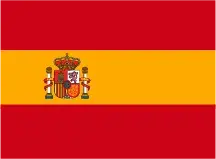Applications for public grants aimed at decarbonising truck and bus fleets, known as Moves MITMA, concluded on April 30th.
While the Business Association for the Development and Promotion of Electric Mobility (AEDIVE) prefers not to speculate on dates, they point out that the Ministry has expressed its intention to launch another round of incentives “as soon as possible.”
This is stated by Arturo Pérez de Lucía González, General Manager of the association in an exclusive “one-on-one” with Mobility Portal España.
“We have met with the Ministry of Transport and the goal is to launch a new plan that improves the conditions of the previous one as much as possible,” he asserts in this regard.
What improvements are expected to be observed?
Despite the subsidy being implemented at a time of technological uncertainty regarding electric trucks and buses, it “has been successful.”
Specifically, Moves MITMA, which initially had a budget of 400 million euros, has subsidized the acquisition of 1,535 eBuses and 688 eTrucks.
Requests for scrapping heavy vehicles amount to 256.8 million euros.
Meanwhile, those aimed at purchasing low-emission vehicles total 214 million euros.
“We have requested that this scrappage be linked to the acquisition of 100 per cent electric units, as it makes sense from the decarbonisation perspective,” emphasises Pérez de Lucía González.
Likewise, recently, the Secretary of State for Transport and Sustainable Mobility, José Antonio Santano, has announced during his intervention at the New Economy Forum that the Government intends to renew Moves MITMA.
Below, the full conversation with Mobility Portal España and the General Manager of AEDIVE:

What will be the future of Moves MITMA?
We know that the Ministry is working on a plan that is as ambitious and interesting as possible, but it is premature to state a specific date.
And Moves III ends next July 31st… Is there any indication that it will continue?
We are aware that the public administration is working on the launch of a new incentive plan that improves the conditions compared to the previous ones, even in terms of the speed of receiving the grants.
At this point, we must focus on trying to exhaust all the funds of the third edition, which still has resources for the Autonomous Communities that request them.
The grants end at the end of July, so we still have time to refine and define a plan that starts from August onwards.
Are there any proposals already in sight?
The aim is for the incentives to be received at the time of purchasing the electric vehicle and for there to be no delays, as is the case in markets like Portugal, where they have an immediate reward system.
That’s the path we must move towards.
Is this related to the decline in registrations?
Partly, yes, but we are also experiencing a cyclical moment where this decrease also affects the sales of fuel cars, even more pronouncedly than in the case of electric ones.
Therefore, it is a widespread decline in the automotive sector that is not limited to electrified vehicles alone.
In the charging sector, the opposite has happened, what is going on there?
Firstly, progress has been made in the working group on electric vehicle charging infrastructure established by the State Secretary for Energy.
This has allowed us to minimise some problems and improve in certain aspects.
Then, charging point operators have also gained experience and capacity in delivering all the necessary documentation to manage the infrastructures, which helps to speed up the installation process.
And regarding the distribution of chargers, is it equitable?
In my opinion, it is.
Thanks to the high-power charging network we have, it is currently possible to travel throughout Spain with an electric vehicle.
Additionally, the development of opportunistic charging in urban and peri-urban environments is also progressing.
Although there are still some shadow areas that need to be worked on, this does not mean that eMobility is not a viable solution.
What are the prospects for this year?
The charging infrastructure must grow in parallel with the increase in the electric vehicle fleet.
Currently, the development of the charging network is ahead, given that we have an average utilisation rate of 6.3 per cent, indicating that chargers remain unused for a large part of the time.
What signals does AEDIVE expect from the Administration?
We have a unique opportunity in Spain, to make a transformation that will make us more resilient and allow us to save and be much more energy efficient.
I believe this should be understood both by the administrations and by the companies, as we have an ecosystem that we must enhance.








